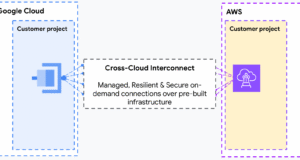The cloud security landscape presents a complex web of misconfigurations and potential exposures. Upwind is introducing its new Exposure Validation Engine to bring clarity to this challenging environment. This AI-driven system adds dynamic, real-time validation to Cloud Security Posture Management (CSPM), aiming to distinguish genuine threats from background noise.
Traditional CSPM often relies on theoretical analysis, flagging potential vulnerabilities based solely on configuration data. Upwind’s approach advances beyond this, actively probing live cloud environments to confirm if identified vulnerabilities are actually exploitable in a real-world context.
How it Works: AI-Powered Penetration Testing
The Exposure Validation Engine utilizes an AI-based framework that merges configuration analysis with live exposure and reachability testing. Envision it as an AI-powered penetration tester, continuously probing for weaknesses in cloud defenses. This includes conducting external reachability checks to verify if assets are genuinely accessible from the internet.
This approach allows for a more proactive and accurate assessment of cloud security risks, moving beyond theoretical vulnerabilities to confirmed, exploitable weaknesses.
“Cloud security teams are tasked to do the impossible, to protect digital assets in an ever-changing cloud environment,” says Amiram Shachar, CEO of Upwind. “Our job is to simplify the work of cloud security leaders with more clarity, evidence-backed findings, and precision.”
Initial results from Upwind’s testing are compelling. In just two weeks, they uncovered tens of terabytes of sensitive data exposed across 2000 organizations. This included AI models, datasets, and entire disks – exposures that had previously remained undetected.
Key Findings from Upwind’s Validation Engine:
- Identified terabytes of sensitive data
- Exposed AI models, datasets, and disks
- Revealed previously undetected vulnerabilities
Cutting Through the Noise: A 90% Reduction in False Positives
The system’s value extends beyond simply identifying exposures; it delivers actionable intelligence. Upwind provides step-by-step evidence, reproducible commands, and structured outputs for each validated exposure. This evidence-driven workflow reportedly results in a 90% reduction in false positives, enabling security teams to concentrate on critical issues.
By significantly reducing the number of false alarms, Upwind’s engine streamlines the incident response process and improves the overall efficiency of security operations.
Upwind’s dynamic CSPM offers concrete advantages for various teams within an organization, improving collaboration and efficiency across departments.
Benefits Across Departments:
- Security teams: Eliminate alert fatigue by focusing on validated, exploitable exposures.
- Engineering teams: Validate and fix issues faster with clear, reproducible commands.
- Compliance teams: Generate audit-ready evidence for every validation performed.
Upwind is advocating for its dynamic validation engine as a significant step forward in cloud security. By combining configuration analysis with real-time, runtime validation, they aim to establish a new benchmark for CSPM. This approach provides a more accurate and comprehensive view of an organization’s security posture.
The emergence of AI-powered security solutions like Upwind’s underscores a critical shift in cloud protection strategies. Relying solely on static configurations is no longer sufficient; dynamic, real-time validation is essential to stay ahead of increasingly sophisticated threats. As cloud environments continue to evolve, anticipate wider adoption of this runtime-first approach among security vendors.




